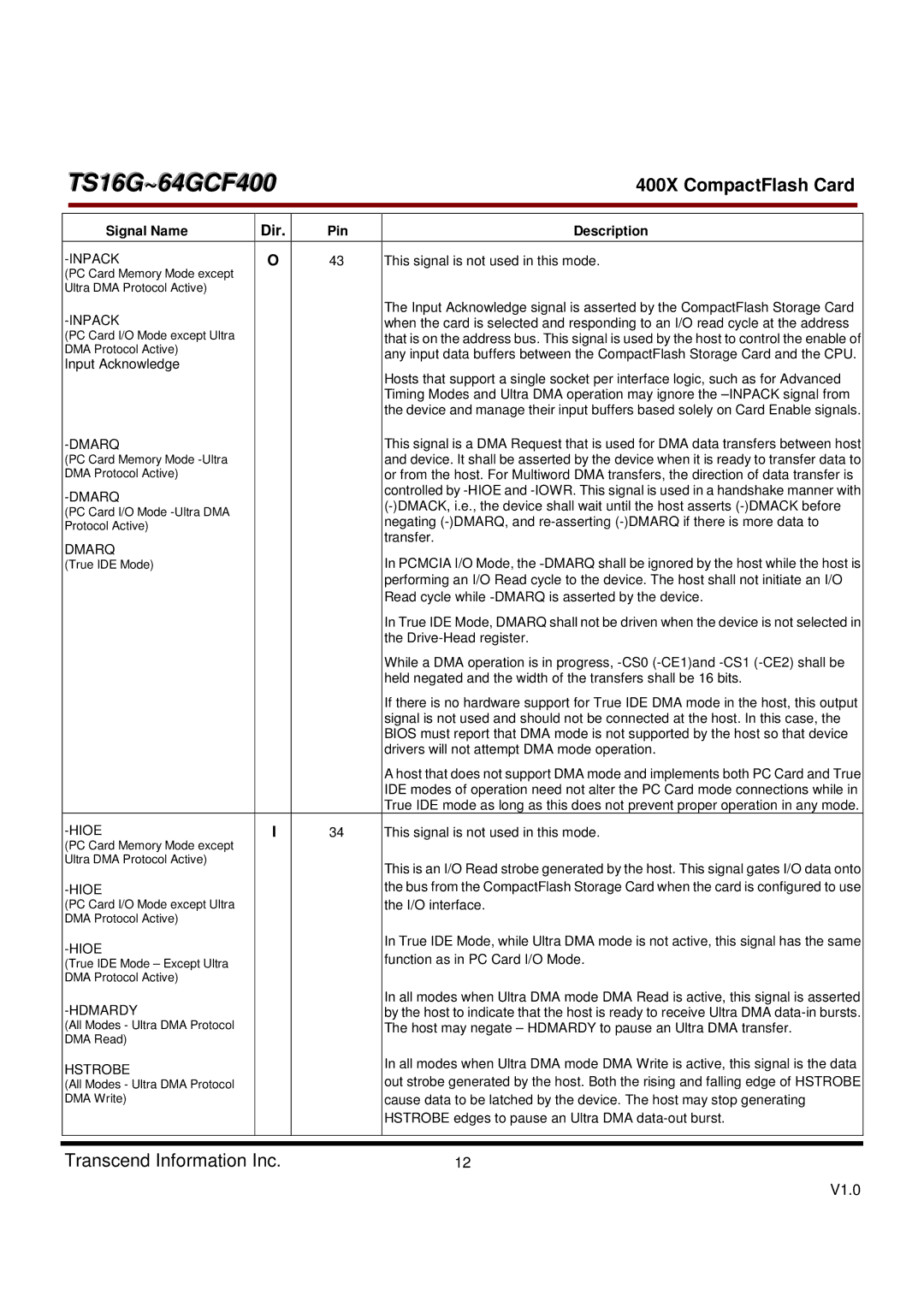TS16G-64GCF400, 400X specifications
The Transcend Information TS16G-64GCF400, 400X is a high-performance CompactFlash card designed specifically to meet the demanding requirements of professionals in photography, video production, and data-intensive applications. With a capacity of 64GB and boasting an impressive transfer speed of up to 400X, the TS16G-64GCF400 is ideal for those seeking reliability and efficiency when recording high-resolution images and videos.One of the standout features of this CompactFlash card is its exceptional read and write speeds. The card can achieve read speeds of up to 90 MB/s and write speeds that can reach up to 60 MB/s. These performance metrics make the TS16G-64GCF400 particularly suitable for burst shooting and continuous video recording, ensuring that every moment is captured accurately and without lag.
In terms of technology, the card utilizes advanced flash memory technology to enhance both speed and durability. Built with a robust construction, it is designed to withstand extreme conditions, making it resistant to shock, temperature fluctuations, and high humidity. This resilience is particularly important for users who often work in unpredictable environments or travel frequently.
The TS16G-64GCF400 is also equipped with the Ultra DMA mode, allowing for faster data transfer between the card and the camera or device it is used with. It supports both PIO and multi-word DMA modes, ensuring compatibility with a wide range of devices. Furthermore, it adheres to the CompactFlash Association's CF4.1 specifications, ensuring that users can rely on its performance across a variety of applications.
Another characteristic worth mentioning is the card's data security features. The Transcend TS16G-64GCF400 incorporates Error Correction Code (ECC) technology to detect and correct potential data corruption, ensuring that files remain intact over time. Additionally, it has built-in wear leveling technology to promote the distribution of write and erase cycles evenly across the memory cells, ultimately prolonging the lifespan of the card.
In conclusion, the Transcend Information TS16G-64GCF400, 400X CompactFlash card stands out in the competitive market of storage solutions. With its impressive speed, durability, and advanced features, it is an excellent choice for professional photographers and videographers who demand high performance and reliability in their storage devices. Whether capturing the next big moment or storing essential data, this card is sure to deliver the performance users need.
